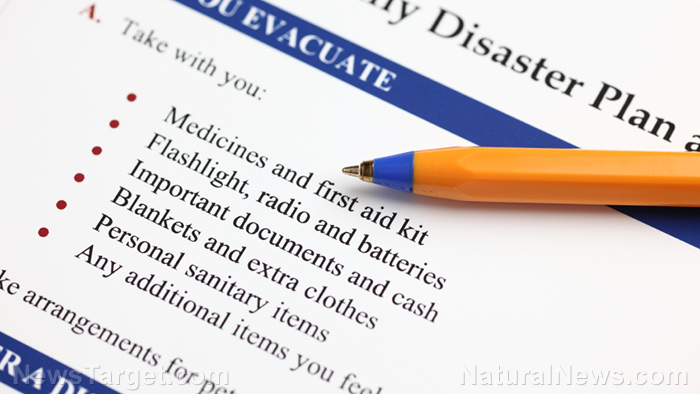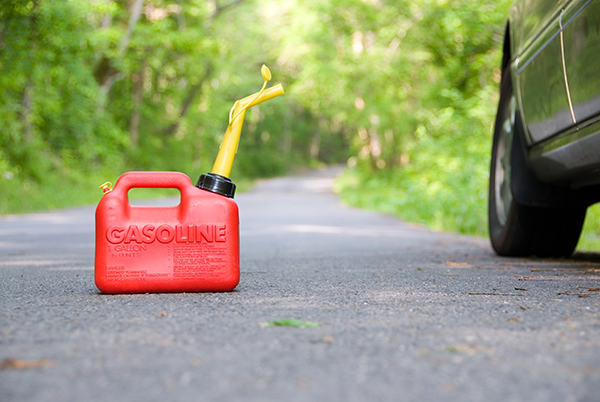
Bugging in (staying in your home) is often the more preferred route to take than bugging out (leaving your home to go somewhere else) when there is an emergency. The point of bugging in is to be able to hunker down in your home until the emergency has passed, which may last longer than anticipated. Therefore, planning is the most crucial step in bugging in. If you plan wrongly or not enough, you could be left wanting for something.
If you are determined to bug in when SHTF, here are some tips to help you prepare. (h/t to PreppersWill.com)
Reasons for bugging in
If you check your home amenities, you may actually last for a couple of weeks or even a month without leaving your house and without any preparation. Here are some advantages of bugging in:
Shelter
In terms of survival in general, shelter is one of the most crucial components to prepare. Bugging in at home provides you with the basic advantages of having a shelter, such as insulation (heating), security (protection from intruders and natural elements) and space (for survival supplies).
Community
If you decide to bug in during an emergency, you will have the advantage of knowing the people who live around you. You and your neighbors can help each other during bugging in by sharing skills, supplies and tools, as well as taking turns patrolling the neighborhood to make sure there are no outsiders that disrupt the community. These can help ease both the mental and physical burden that comes with having to keep an eye on the area outside your home 24/7.
Knowledge of the area
Another advantage of bugging in is that you’re staying in an area that you already know well. This eliminates the need to spend time mapping out sources of supplies for restocking; you already know where to go if you need firewood and water or to find shops and gas stations.
Your knowledge of the area also gives you the advantage of knowing certain routes and shortcuts you can take to avoid danger or to go back home faster.
Supplies
When bugging out, you will have a limited amount of supplies – just the ones you can carry. In contrast, bugging in your home gives you access to all your supplies, which can let you see through a short-term emergency. It also makes improvising easier, in case you need to make some survival tools out of regular household items. That said, it pays to plan for such situations to avoid running short of supplies.
Preparations for bugging in
When planning to bug in, you must consider the people you’re living with. Planning will be much easier if you’re bugging in on your own, but if there are children, pets or older adults in your family, you must also consider their specific needs.
Food and water
Stocking up on food and water requires planning – you don’t want to consume all of your stocks well before the emergency is over.
Water is perhaps the most crucial thing to stockpile. Your body can endure being deprived of many things for longer periods of time, but not water. Your water supply will run out, so make sure to have a backup. You can collect water from a nearby pool or pond, or you can collect rainwater. Use large, sealable food-grade containers or even smaller ones like empty soda bottles.
When collecting water, make sure to have a filtration and purification system in place to ensure the cleanliness and safety of your supply.
Health and nutrition are even more crucial when facing a survival situation, so stock up on foods that are rich in key nutrients that your body needs to survive, such as carbohydrates, protein, healthy fats, vitamins and minerals. Here are some items to add to your survival stockpile:
- Oatmeal
- Beans and lentils
- Pre-packed pasta
- Corn
- Chicken
- Eggs
- Protein powder
- Protein bars
- Nuts
- Jerky
- Powdered milk
- Olive oil
- Lard
- Coconut oil
- Sugar
- Honey
- Freeze-dried foods
- Canned foods
- Vitamin supplements
- Electrolyte powder
- MREs (Meals Ready to Eat)
If you have a baby or pets in the family, make sure to stock up on their basic needs, such as baby formula or pet food.
First aid
First aid is an essential skill whether you plan to bug in or bug out. If you’re on your own, you should learn how to treat yourself before medical aid arrives. If you’re with family, it would be helpful for them to know first aid skills as well.
That said, a first aid kit for your home should be more comprehensive than a first aid kit for your bugout bag. Besides the basic items that should be included in a first aid kit, you should also add medications for preexisting conditions of a family member or even pets. Moreover, the components of the first aid kit can vary in terms of the family member’s age, so learn what you need to stock for pediatric or elderly first aid accordingly.
You may think that an injury is more likely to occur when bugging out than bugging in, but there are several ways to get injured at home, so prepare for treating these conditions:
- Burns from open flames
- Burns from chemicals
- Cuts
- Stab wounds
- Falling injuries
Sanitation and waste disposal
In a situation that requires bugging in, waste collection may not come as regularly as in normal conditions, so you should plan for waste disposal. Plan your meals to reduce food waste, recycle what you can, and burn the waste that cannot be recycled.
For sanitation, prepare for a possible lack of running water, in which case you may have to consume your water stockpile. You can use solar shower bags to help you keep clean without using up too much water. Stock up on soap bars, which will last longer than shower gels.
You can flush the toilet with used water to save up on clean water. If you don’t want to use up your collected water, you can use a portable commode with disposable liners; a bucket or cat litter; or an outhouse. Whichever method you choose, make sure to do it far away from any clean water sources and mark each burial site so that you don’t accidentally dig it up again.
Power
Most of your equipment at home will rely on electricity, so make sure to have backup power in case you have to bug in for longer than anticipated. You can use a portable generator, but make sure to stock up enough fuel.
In addition, you can buy small inverters that serve as main power outlets from vehicle batteries. These can even be used as a battery chargers when you cannot run a generator. Solar panels are another option for backup power, although installation can be quite expensive.
Heat and light
Heat and light are other necessities for survival. If there’s a power outage, you won’t be able to rely on heaters and lights that run on electricity.
If your house has a fireplace, stock up on firewood and fire-starting kits to keep your home warm. You can also install a wood stove to provide heat in a room or make a campfire outside your house.
For light sources, you can use battery-powered LED lights, lanterns and candles. Just make sure to stock up on enough batteries and fuel.
Communications
Keeping your lines open allows you to stay updated on the situation that compelled you to bug in. Aside from your smartphone or tablet, you should have battery-powered or hand-crank radios to listen to emergency broadcasts and walkie-talkies to talk with members of your family or even trusted neighbors.
Security
Since all your supplies, tools and equipment for survival are in your home, protecting it from potential intruders should be a priority. Add extra locks to your doors and windows; install security cameras around your house; and build a perimeter fence around your property.
As a further measure, split up your supplies into different caches hidden in areas around the house to avoid potentially losing them all at once.
You should also consider getting a firearm to defend your home and protect yourself and your family in case the intruders manage to get past the other security measures. Note that owning a firearm is a huge responsibility, which requires getting permits and undergoing proper training, so have these covered before purchasing your weapon.
If your situation compels you to leave home and go to another location instead, read up on preparedness tips for bugging out at BugOut.news.
Sources include:
Please contact us for more information.





















